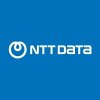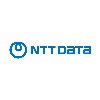


i
Infosys
Filter interviews by
Infosys Technology Analyst Full-time Job Interview Questions, Process, and Tips
Infosys Technology Analyst Interview Experiences
162 interviews found
I applied via Naukri.com and was interviewed in Nov 2024. There were 2 interview rounds.
(2 Questions)
- Q1. OOPS, DI, Diff between Read-only and const
- Q2. Types of classes
- Ans.
Types of classes include abstract classes, concrete classes, interface classes, and inner classes.
Abstract classes cannot be instantiated and may contain abstract methods.
Concrete classes can be instantiated and provide implementations for all methods.
Interface classes define a contract for classes to implement.
Inner classes are classes defined within another class.
(2 Questions)
- Q1. Strength and weakness
- Q2. How do you handle difficult situations within a team?
- Ans.
I address difficult situations within a team by promoting open communication, seeking to understand all perspectives, and collaborating on solutions.
Promote open communication to address issues early on
Seek to understand all perspectives before making decisions
Collaborate with team members to find mutually beneficial solutions
I applied via Naukri.com and was interviewed in Sep 2024. There was 1 interview round.
(3 Questions)
- Q1. Java 8 features
- Q2. Microservices framework
- Q3. OOPs concepts & multi threading
Interview Preparation Tips
I applied via Naukri.com and was interviewed in Nov 2024. There was 1 interview round.
(1 Question)
- Q1. Angular basics,pipes ,life cycle hook pipes.
(1 Question)
- Q1. Core Java, OOPS, Design Patters, Spring Boot, IOC, SOLID Principles, SQL queries
Infosys interview questions for designations
I applied via Referral and was interviewed in Mar 2024. There were 2 interview rounds.
(4 Questions)
- Q1. Tell me yourself
- Ans.
I am a technology analyst with a strong background in data analysis and software development.
I have a Bachelor's degree in Computer Science from XYZ University
I have 5 years of experience working as a technology analyst at ABC Company
I specialize in data visualization tools such as Tableau and Power BI
I have led successful projects in implementing new software solutions for clients
- Q2. What is your skillset and based on your skill set some straight forward question in round 1 and scenario based question in round 2.
- Q3. Tell me some analytic function of sql
- Ans.
Analytic functions in SQL are used to perform calculations across a set of rows related to the current row.
Common analytic functions include ROW_NUMBER, RANK, DENSE_RANK, LEAD, and LAG.
They can be used to calculate running totals, moving averages, and identify duplicates in a dataset.
Analytic functions are typically used with the OVER() clause to define the window of rows to be used in the calculation.
- Q4. Difference between rank and dense rank
- Ans.
Rank assigns unique ranks to each distinct value, while dense rank assigns consecutive ranks to each distinct value.
Rank leaves gaps between ranks if there are ties, while dense rank does not
Rank function is used to assign a unique rank to each distinct row, while dense rank function is used to assign consecutive ranks to each distinct row
Example: If we have values 10, 20, 20, 30 - Rank would assign ranks as 1, 2, 2, 4...
(2 Questions)
- Q1. I have Oracle EBS APPS.. so I faced questions on PLSQL tuning, exception handling, XML publisher report, P2P cycle with associative table
- Q2. Bulk Binding, Bulk collect, cursor, dynamic SQL,DML/DDL Trigger
Interview Preparation Tips
Skills evaluated in this interview
I applied via Naukri.com and was interviewed in May 2024. There was 1 interview round.
(3 Questions)
- Q1. Difference in POST and PUT
- Ans.
POST is used to create a new resource, while PUT is used to update an existing resource.
POST is used to create a new resource on the server.
PUT is used to update an existing resource on the server.
POST requests are not idempotent, while PUT requests are idempotent.
POST requests do not require the client to specify the URI of the new resource, while PUT requests do.
Example: POST /users creates a new user, PUT /users/123
- Q2. Explain headers with example in HTTP
- Ans.
Headers in HTTP are additional information sent with a request or response.
Headers contain metadata about the message being sent.
Examples of headers include Content-Type, User-Agent, and Authorization.
Headers are key-value pairs separated by a colon, such as 'Content-Type: application/json'.
- Q3. What is @Qualifier annotation
- Ans.
The @Qualifier annotation is used in Spring framework to specify which bean should be autowired when multiple beans of the same type are present.
Used to resolve ambiguity when multiple beans of the same type are present
Can be used with @Autowired annotation to specify the bean to be injected
Helps in selecting the bean based on a specific qualifier value
Skills evaluated in this interview
Technology Analyst Jobs at Infosys
I applied via Recruitment Consulltant and was interviewed in Apr 2024. There were 2 interview rounds.
(3 Questions)
- Q1. 1. Introduces your self 2. Ask about basic datastage questions
- Q2. 3 . Explain scd 2 and how can we build in datastage 4. Write sql query which is related to join and sub query.
- Ans.
SCD 2 is a type of slowly changing dimension in data warehousing, and can be implemented in DataStage using various techniques.
SCD 2 stands for Slowly Changing Dimension Type 2, which tracks historical changes in data over time.
In DataStage, SCD 2 can be implemented using the Change Data Capture stage or custom SQL queries.
To implement SCD 2 in DataStage, you need to identify the key columns for tracking changes, defin...
- Q3. 5. How to improve performance in Datastage
- Ans.
To improve performance in Datastage, optimize job design, use efficient coding practices, utilize parallel processing, and monitor job performance.
Optimize job design by reducing unnecessary stages and transformations
Use efficient coding practices such as avoiding unnecessary data reads and writes
Utilize parallel processing to take advantage of multiple CPU cores
Monitor job performance using Datastage Director or other
(2 Questions)
- Q1. 1. Introduce yourself self
- Q2. 2. Why are you planing to switch job
I applied via Campus Placement and was interviewed in Oct 2024. There were 2 interview rounds.
Quants, reasoning, english
With oops concepts, data structures
I applied via Naukri.com and was interviewed in Aug 2024. There was 1 interview round.
(2 Questions)
- Q1. Change management
- Q2. Dns dhcp troubleshooting
(1 Question)
- Q1. Basic Core JAVA
(1 Question)
- Q1. Project related questions
What people are saying about Infosys






Infosys Interview FAQs
Some of the top questions asked at the Infosys Technology Analyst interview for job -
The duration of Infosys Technology Analyst interview process can vary, but typically it takes about less than 2 weeks to complete.
Tell us how to improve this page.
Infosys Interviews By Designations
- Infosys System Engineer Interview Questions
- Infosys Software Engineer Interview Questions
- Infosys Technology Analyst Interview Questions
- Infosys Associate Consultant Interview Questions
- Infosys Senior Systems Engineer Interview Questions
- Infosys Software Developer Interview Questions
- Infosys Business Analyst Interview Questions
- Infosys Senior Associate Consultant Interview Questions
- Show more
Interview Questions for Popular Designations
- Technology Consultant Interview Questions
- Technology Specialist Interview Questions
- Business Technology Analyst Interview Questions
- Associate Information Technology Consultant Interview Questions
- Associate Technology Interview Questions
- Assistant Manager Information Technology Interview Questions
- Technology Architect Interview Questions
- Technology Engineer Interview Questions
- Show more
Infosys Technology Analyst Interview Process of Full-time Jobs
based on 93 interviews
5 Interview rounds
- Technical Round
- HR Round - 1
- Personal Interview1 Round - 1
- HR Round - 2
- Personal Interview1 Round - 2
Top Skills for Infosys Technology Analyst






Technology Analyst Interview Questions from Similar Companies
Fast track your campus placements
Infosys Technology Analyst Reviews and Ratings
based on 4.4k reviews
Rating in categories
|
Technology Analyst
55.4k
salaries
| ₹3 L/yr - ₹11 L/yr |
|
Senior Systems Engineer
51k
salaries
| ₹2.5 L/yr - ₹7.8 L/yr |
|
System Engineer
31.6k
salaries
| ₹2.5 L/yr - ₹5.5 L/yr |
|
Technical Lead
31k
salaries
| ₹5.1 L/yr - ₹19.7 L/yr |
|
Senior Associate Consultant
28.5k
salaries
| ₹6.2 L/yr - ₹17 L/yr |

TCS

Wipro

Cognizant

Accenture
- Home >
- Interviews >
- Infosys Interview Questions >
- Infosys Technology Analyst Job Interview Questions













